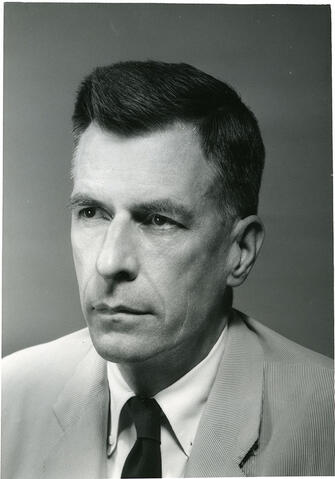
Zona do título e menção de responsabilidade
Título próprio
John Kenneth Galbraith - Portrait
Designação geral do material
- Material gráfico
Título paralelo
Outra informação do título
Título e menções de responsabilidade
Notas ao título
Nível de descrição
Item
Entidade detentora
Código de referência
Zona de edição
Menção de edição
Menção de responsabilidade da edição
Zona de detalhes específicos de materiais
Menção da escala (cartográfica)
Menção da projecção (cartográfica)
Menção das coordenadas (cartográfico)
Menção da escala (arquitectura)
Autoridade emissora e denominação (filatélica)
Zona de datas de criação
Data(s)
-
[1965?] (Produção)
Zona de descrição física
Descrição física
1 photograph : b&w ; 17.5 x 12.5 cm
Zona dos editores das publicações
Título próprio do recurso continuado
Títulos paralelos das publicações do editor
Outra informação do título das publicações do editor
Menção de responsabilidade relativa ao editor do recurso contínuo
Numeração das publicações do editor
Nota sobre as publicações do editor
Zona da descrição do arquivo
Nome do produtor
História custodial
Âmbito e conteúdo
Head and shoulders image of John Kenneth Galbraith, Honourary Degree recipient; possibly taken at time of presentation.
Bio/Historical Note: John Kenneth Galbraith, also known as Ken Galbraith, was born in 1908 at Iona Station, Ontario. After study at the University of Toronto’s Ontario Agricultural College (now part of the University of Guelph; BS 1931) and the University of California, Berkeley (PhD 1934), Galbraith, who became a U.S. citizen in 1937, taught successively at Harvard and Princeton universities until 1942. During World War II and the postwar period, he held a variety of government posts and served as editor of Fortune magazine (1943-48) before resuming his academic career at Harvard in 1948. He established himself as a politically active liberal academician with a talent for communicating with the reading public. A key adviser to President John F. Kennedy, Galbraith served as ambassador to India from 1961 to 1963, when he returned again to Harvard; he became professor emeritus in 1975. He also continued his involvement in public affairs, and in 1967-68 he was national chairman of Americans for Democratic Action. Galbraith’s major works included American Capitalism: The Concept of Countervailing Power (1951), in which he questioned the competitive ideal in industrial organization. In his popular critique of the wealth gap, The Affluent Society (1958), Galbraith faulted the “conventional wisdom” of American economic policies and called for less spending on consumer goods and more spending on government programs. In The New Industrial State (1967) he envisioned a growing similarity between “managerial” capitalism and socialism and called for intellectual and political changes to stem what he saw as a decline of competitiveness in the American economy. Among his many other works were The Great Crash, 1929 (1955), The Liberal Hour (1960), Ambassador’s Journal (1969), A Life in Our Times: Memoirs (1981), The Anatomy of Power (1983), Economics in Perspective: A Critical History (1987), and The Culture of Contentment (1992). He was awarded the Presidential Medal of Freedom in 1946 and 2000. Galbraith died in 2006 in Cambridge, Massachusetts, at age 96.
Zona das notas
Condição física
Fonte imediata de aquisição
Organização
Idioma do material
Script do material
Localização de originais
Disponibilidade de outros formatos
Restrições de acesso
Photographer: Unknown
Copyright holder: Unknown
Other terms: Responsibility regarding questions of copyright that may arise in the use of any images is assumed by the researcher.

